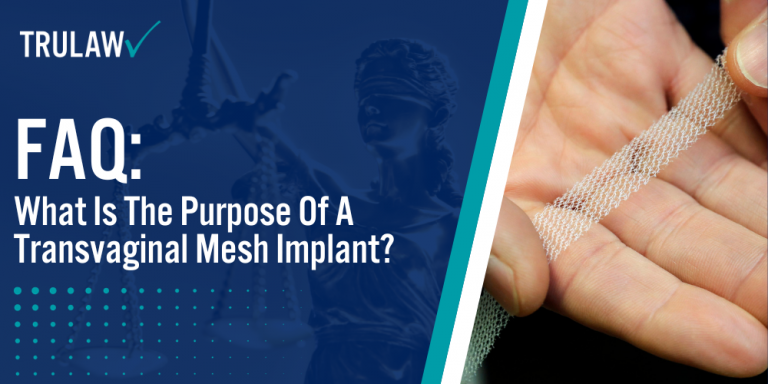Transvaginal mesh is a medical device often used in surgeries to treat conditions like pelvic organ prolapse, stress urinary incontinence, and pelvic floor disorder.

Surgeons use it to provide support to weakened or damaged tissues in the women’s pelvic area.
This net-like implant plays a vital role in treating two significant conditions: stress urinary incontinence, where pressure on your bladder causes uncontrolled urine leakage, and pelvic organ prolapse, a condition where organs like the uterus, rectum, or bladder drop due to weak supporting muscles and ligaments.
The procedure involves an incision into the vaginal wall through which surgeons position the mesh sling to lift and hold fallen organs securely.
Uses in Pelvic Floor Surgery
Surgeons utilize transvaginal mesh in pelvic floor surgery to deal with conditions such as pelvic organ prolapse and stress urinary incontinence.
The aim of the implant is to provide support by reinforcing the weakened or damaged tissues.
By setting the mesh into the vaginal wall, it acts as a supportive netting, effectively holding up prolapsed organs.
The strategic placement and anchoring of this device help restore functionality to pelvic floor muscles, offering relief from symptoms associated with prolapse.
Studies show that permanent transvaginal mesh reduces rates of recurrence for both these conditions and lessens the need for repeat surgeries compared to native tissue repair.
This makes it a preferred choice in alleviating issues linked with women’s reproductive health.
Types and Manufacturers

There is a variety of transvaginal mesh implants available, produced by different manufacturers.
- Pelvic Mesh: This type of implant provides general support for pelvic organs.
- Tape: Narrow strips of mesh, also known as slings or ribbons, specifically designed to treat stress urinary incontinence.
- Sling: This form is often used to deal with the prolapse of the uterus or bladder.
- Graft: Large pieces of mesh used to reinforce walls and tissues inside the vagina.





